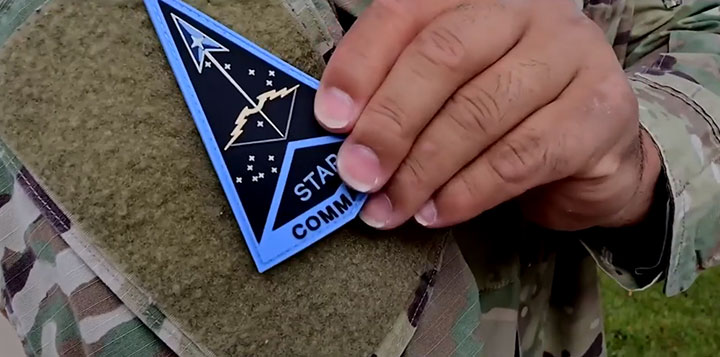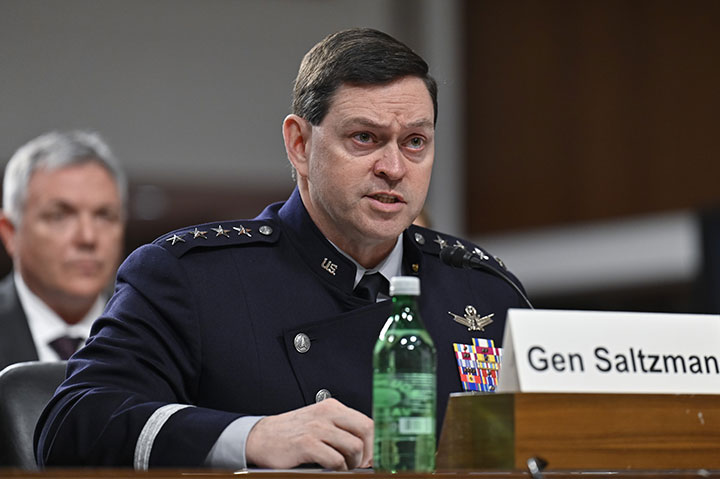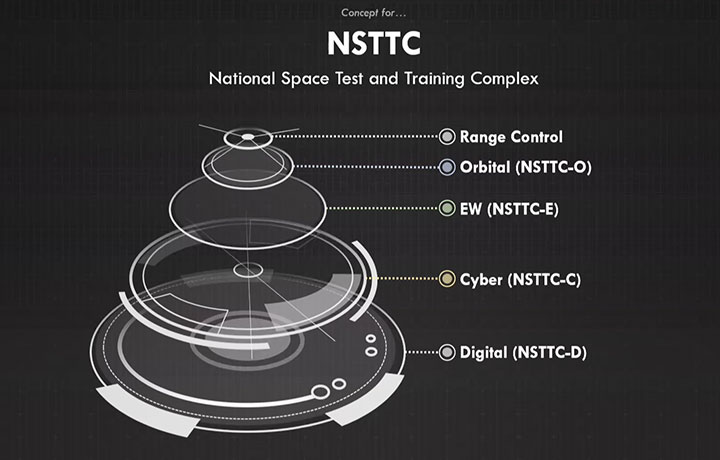WASHINGTON — Space Force has faced unique challenges in preparing Guardians to protect and defend U.S. and allied interests in space. The domain does not lend itself to easy hands-on training, prompting greater demand for high-fidelity, immersive virtual tools.
 Space Training and Readiness Command prepares Space Force Guardians to fight and win in a contested, degraded and operationally limited space environment. (Source: USSF)
Space Training and Readiness Command prepares Space Force Guardians to fight and win in a contested, degraded and operationally limited space environment. (Source: USSF)
According to Space Force Chief of Space Operations Gen. Chance Saltzman, the tools being used today are not yet adequate to prepare forces to engage a thinking adversary in a contested space operating environment.
During its short time as a service, Space Force has acquired several simulators and early models of virtual ranges to train Guardians in space-based warfighting concepts. “I just don’t think they’re sufficient yet,” Saltzman told lawmakers at a Senate Armed Services Hearing Tuesday. “Primarily because they don’t replicate the threat effectively.”
Space Force is seeking to close that gap through its latest budget request, asking for $340 million across the next five years to support a robust digital training environment and space range.
The investment will “increase the fidelity of our simulators and allow us to inject threats into the environment so that our crews can validate their tactics and validate their training against a thinking adversary,” Saltzman said.
He added that “there’s a lot of exploitation that we can do with those kinds of technologies and we’re looking into those with commercial industry.”
The training budget is expected to encompass the acquisition of augmented reality (AR) and virtual reality (VR) tools being developed by the private sector and adapted for military training. It will also support Space Force’s operational test and training infrastructure, the National Space Test and Training Complex (NSTTC), or space range, at Shriever Space Force Base in Colorado under Space Training and Readiness Command (STARCOM).
 Chief of Space Operations Gen. Chance Saltzman testifies before the Senate Armed Services Committee for the Department of the Air Force fiscal year 2024 budget request, May 2, 2023. (Source: U.S. Air Force/Eric Dietrich)
Chief of Space Operations Gen. Chance Saltzman testifies before the Senate Armed Services Committee for the Department of the Air Force fiscal year 2024 budget request, May 2, 2023. (Source: U.S. Air Force/Eric Dietrich)
Some Space Force leaders have emphasized that the domain is tailor-made for virtual training. In many scenarios, AR/VR training tools can provide visualizations and physics-based models of operations that would otherwise be impossible or too risky to execute in the actual domain.
STARCOM Commander Maj. Gen. Shawn Bratton recently noted that Space Force trainers don’t “have the luxury, like the terrestrial domains do, of carving out a piece of real estate” to use as a range.
Exercises, Ranges and Doctrine
Space Force is focused on force readiness as one of its three “lines of effort,” to ensure the service has not only the best technology systems, but the trained personnel to use them to create the needed effects. Toward that end, the force has been engaged in wargames and exercises with the joint force, international allies and industry partners, like SPACE FLAG or the “Skies” series.
Like his concerns about the lack of training infrastructure, Saltzman recently told reporters that the current pace of training exercises is “still insufficient” to reach the number of Guardians who need hands-on experience executing space warfare tactics.
Currently, STARCOM conducts Space Flag and Skies exercises on an annual basis. The command conducted its most recent Black Skies exercise in March, which replicated the challenges of electronic warfare. In an apparent push to increase the tempo, the next Black Skies exercise is scheduled for the fall. STARCOM is also planning a Red Skies exercise this summer, focused on orbital warfare and plans to schedule Blue Skies for cyber warfare training in the near term.
 This screenshot of a STARCOM presentation at the 38th Space Symposium shows the areas of focus for the National Space Test and Training Complex at Shriever Space Force Base. (Source: STARCOM/Space Foundation)
This screenshot of a STARCOM presentation at the 38th Space Symposium shows the areas of focus for the National Space Test and Training Complex at Shriever Space Force Base. (Source: STARCOM/Space Foundation)
Space Force leaders have emphasized the ongoing need for more robust physical and digital infrastructure to support advanced training for Guardians to be successful in a threat environment. STARCOM is working to build out the NSTCC to further support the development of tactics, techniques and procedures for competition and combat in space. The center is currently focused on test and training ranges across four critical mission areas: electromagnetic warfare, on-orbit warfare cyber operations and a digital range. The digital range is considered the “backbone” that provides hybrid digital environments, modeling and simulations for development, testing, training and wargaming.
The ranges also support the difficult work of developing space warfighting doctrine, which Bratton described as probably the “greatest intellectual challenge” for STARCOM. “Normally, you develop doctrine from experience in warfighting,” he told an audience at Space Symposium last month. “We have never fought in space and we don’t want to ever fight in space. But we have to have a warfighting doctrine…so we can train and educate the force on it.”
Bratton and other Space Force leaders have called on industry to help build out the testing and training infrastructure and contribute to exercises that advance operational tactics, techniques and procedures. NSTCC will be holding an Industry Day on June 22-23 in Colorado Springs.
Explore More:
Podcast: Maj. Gen. Bratton on STARCOM and Virtualized Training for Space
Hollywood Tech Is Helping Solve Big Data Problems in Space
‘Technology Is Not Enough’: Gen. Saltzman Addresses Industry’s Role in Force Readiness
